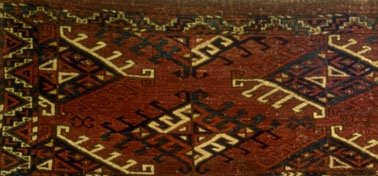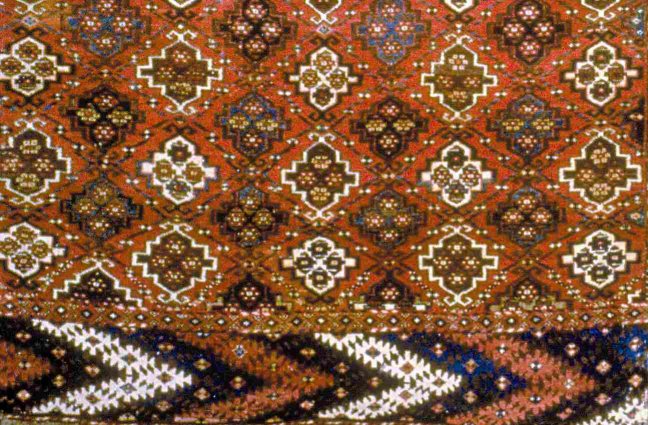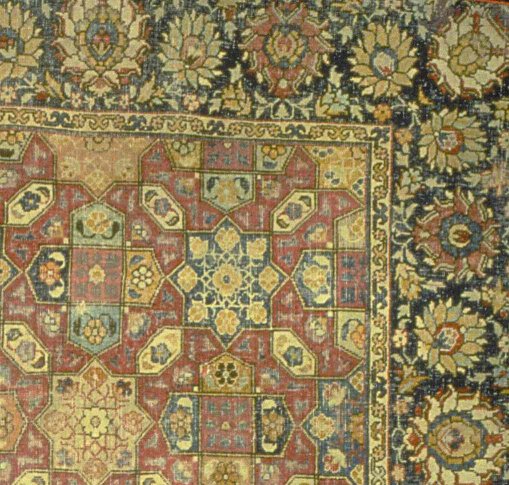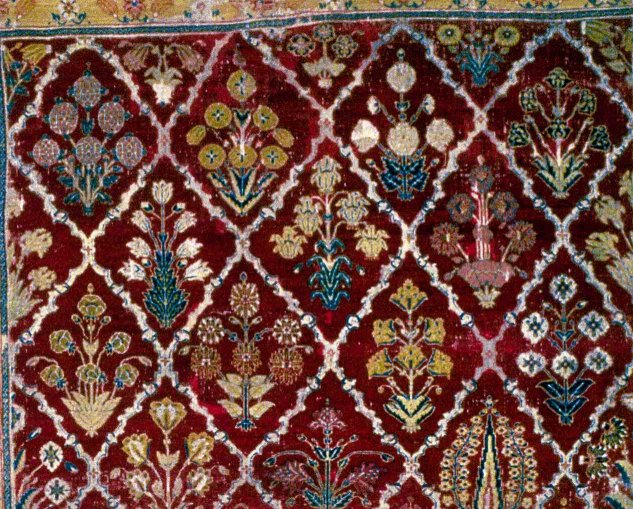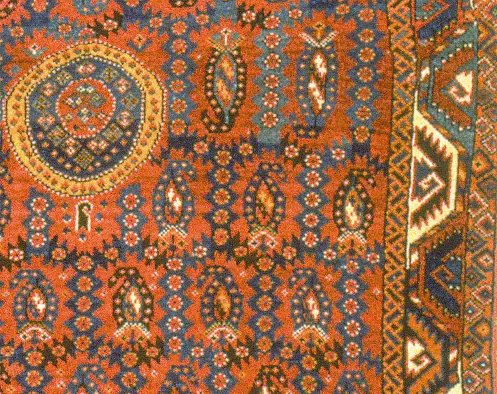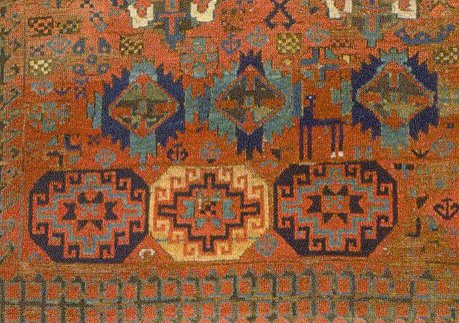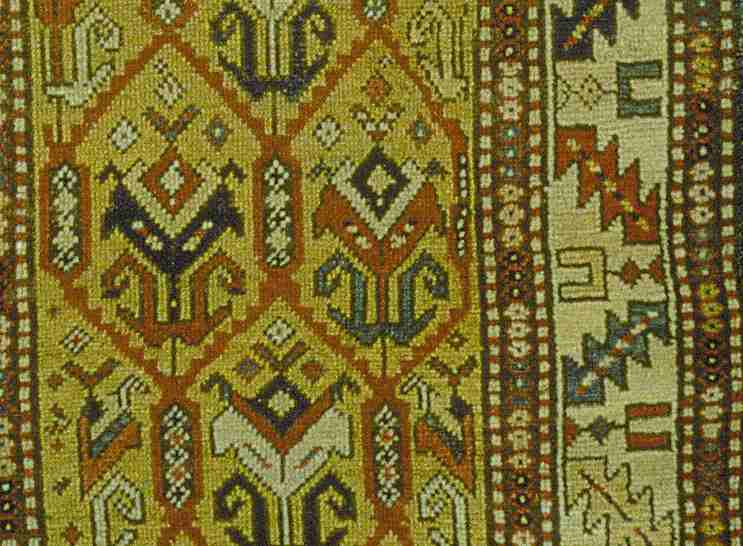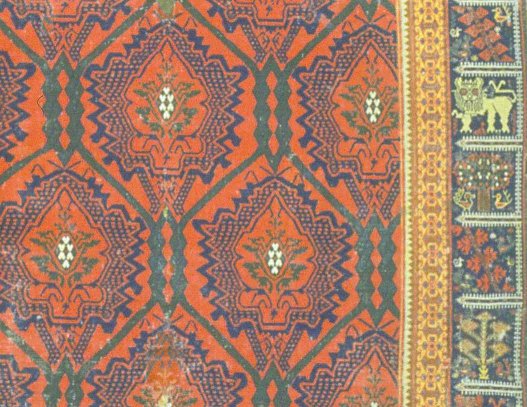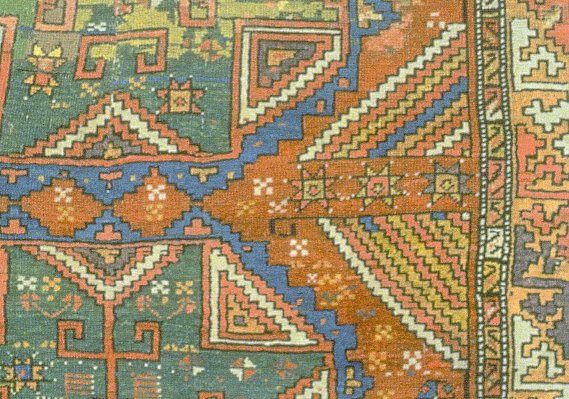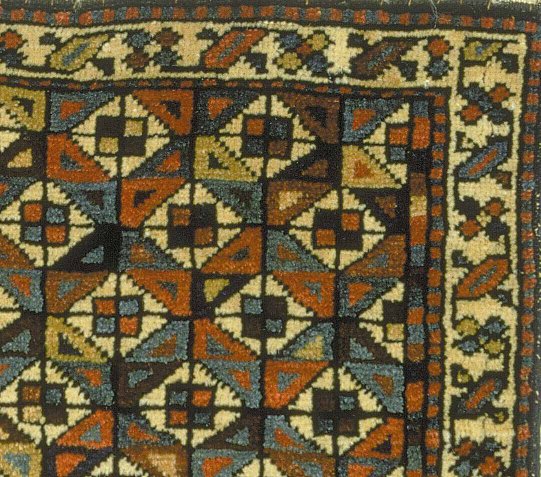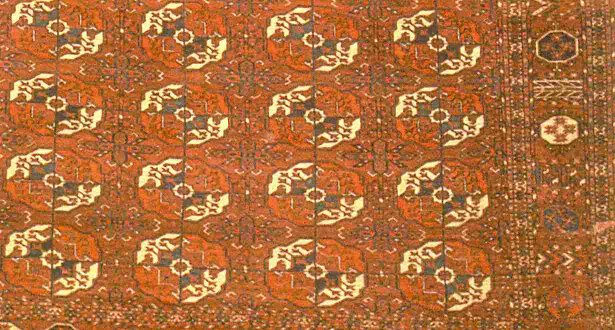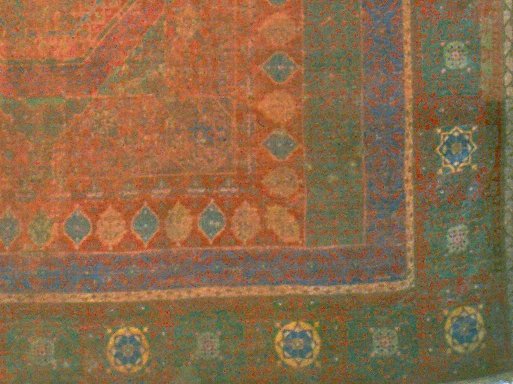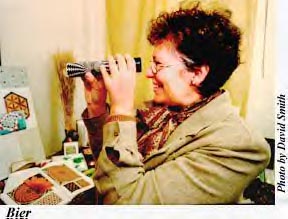|
The Case for Beauty
Carol Bier,
© The Textile Museum, Washington, DC 2001
Mathematicians treat symmetry as an ideal. But it is in symmetry-breaking that beauty emerges from truth. Symmetry-breaking requires an expectation of symmetry. Often, symmetry-breaking is confused with asymmetry. But, rather, asymmetry is simply the absence of symmetry. For symmetry-breaking to exist, a pattern must first be stablished. Symmetry then is expected, but somehow that expectation is not met. There are many ways to effect symmetry-breaking in Oriental carpets. The study of Oriental carpets may lead one to suppose that in art, as in nature, it is in the approximation of symmetry, rather than in its precision, that beauty is to be found and appreciated. What is an Oriental Carpet? No one ever set out to weave an Oriental carpet. A woman, or a girl, or less often a young boy, simply set out to weave a carpet. The concept of Oriental carpet transcends original cultural origins; it is a Western construct. Typically, an Oriental carpet is oblong in format, with a central field surrounded by borders. Many different patterns are present. All hand-made Oriental carpets
are filled with symmetry-breaking.
Symmetry All patterns, whether in nature or in art, exhibit a systematic organization. Symmetry offers several possibilities for the organization of a pattern, each of which results in sets of corresponding points. In rug weaving, the symmetrical repetition of a design to form a pattern is effected by counting and repeating sequences of knots. Possibilities for the composition
of a design are limitless, and rely upon choice. But possibilities for
the repetition of a design are limited by the laws of pattern formation,
subject to the constraints of symmetry.
Symmetry-Breaking in Oriental Carpets There are many ways a weaver may choose to break the symmetry of a pattern. I have characterized twelve methods, which group into four categories of transformation: Transformations of Color Transformations of Shape Transformations of Space Transformations of Pattern These often appear in combination
with one another. Typically, in Oriental carpets, there are numerous examples
of symmetry-breaking in any given carpet.
Transformations of Color
Color change (binary)
Color change (algorithmic)
Color change (random)
Transformations of Shape
Change of shape (content)
Change of shape (orientation)
Change of shape (addition)
Transformations of Space
Change of space (placement)
Change of space (interlace)
Change of space (illusion)
Transformations of Pattern
Field patterns (arbitrary
cut-off)
Multiple patterns (juxtaposition)
Carol Bier is Research Associate
at The Textile Museum in Washington, DC, where she had served as Curator
for Eastern Hemisphere Collections for seventeen years from 1984 to 2001.
She is author of The Persian Velvets at Rosenborg
(Copenhagen, 1995), editor and contributing author of Woven
from the Soul, Spun from the Heart: Textile Arts of Safavid and Qajar Iran
(16th-19th Centuries) (Washington, 1987), and editor of The
Textile Museum Journal. Her on-line exhibition, "Symmetry
& Pattern: The Art of Oriental Carpets," at <http://forum.swarthmore.edu/geometry/rugs/>,
has won numerous awards. It is a collaborative project of The Math Forum
at Swarthmore College and The Textile Museum.
|
